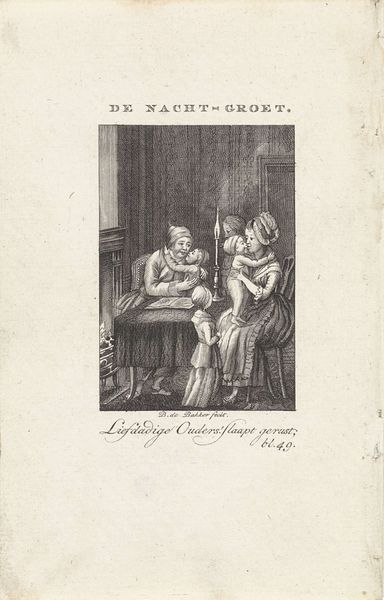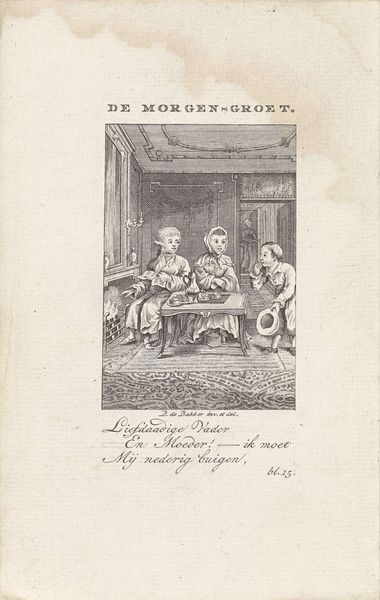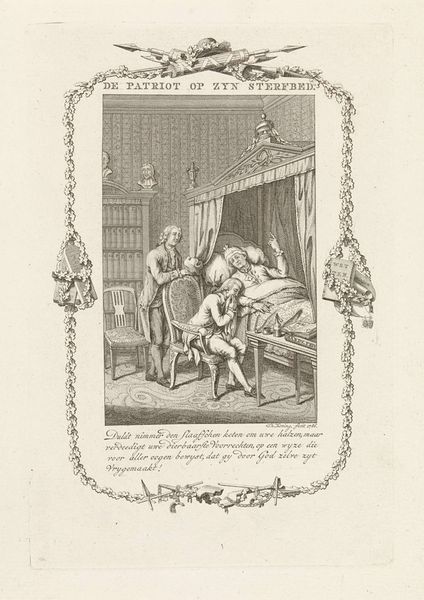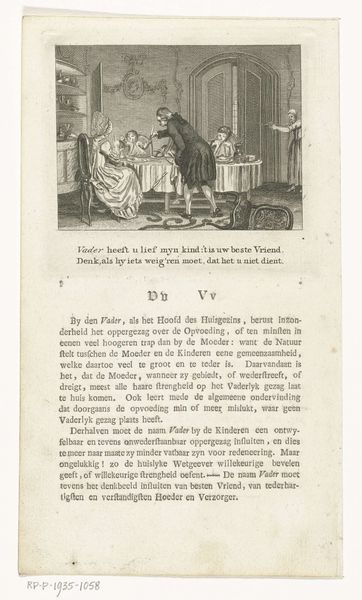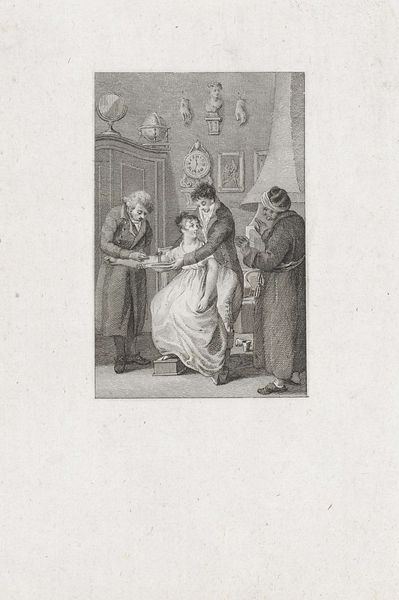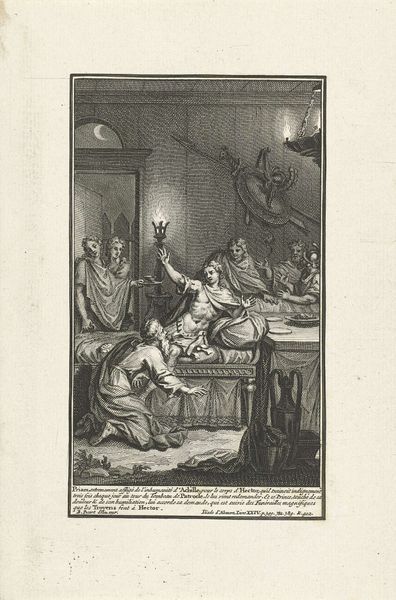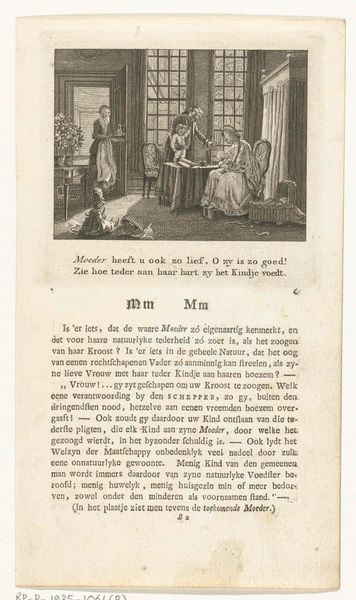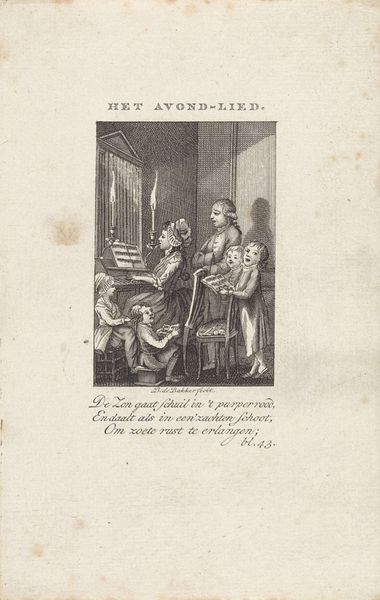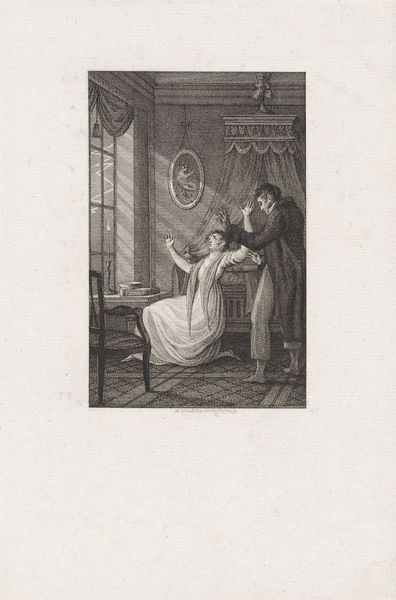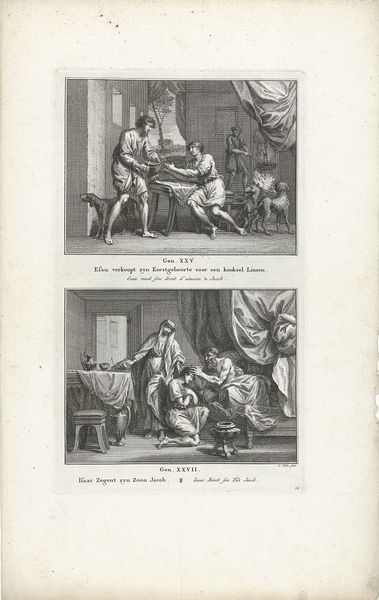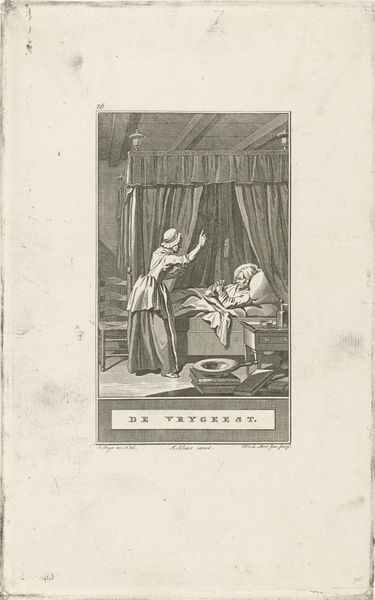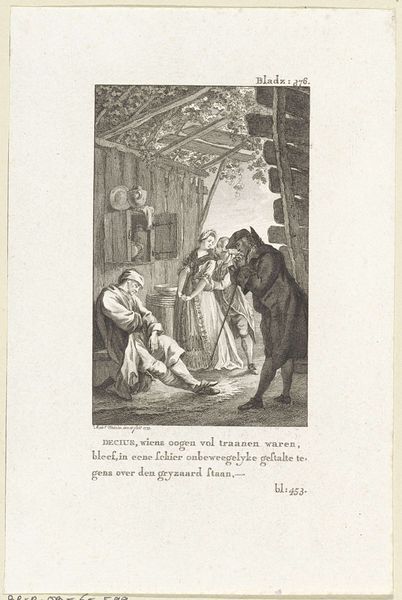
print, engraving
#
portrait
# print
#
old engraving style
#
historical photography
#
romanticism
#
genre-painting
#
history-painting
#
engraving
Dimensions: height 233 mm, width 146 mm
Copyright: Rijks Museum: Open Domain
Curator: This print, dating to 1828, is titled "Man in een deuropening wordt begroet", or "Man in a doorway is greeted" – it's currently held here at the Rijksmuseum. Editor: The lighting is really dramatic. You get these bright whites contrasted against very deep blacks, almost theatrical in a way. Curator: Indeed. Considering it's an engraving, a medium reliant on those contrasts, it effectively uses stark contrasts for dramatic storytelling. This image serves as the frontispiece for a novel of the time. These illustrative prints offered narratives beyond the written word, engaging a wider audience in the social issues discussed. Editor: I notice a grouping around a fainting woman. Is that what we should expect as an iconographical interpretation here, an emblem of heightened sentiment typical of romantic novels of that era? And beyond, two characters are frozen in dance and observed with caution? Curator: Precisely. You're pointing to how romanticism was marketed through this engraving style during the rise of commercial artwork at the beginning of the 19th Century. Note how figures are clustered to emphasize key interactions. This promotes the values upheld during that historical moment. Editor: And also how this era seems preoccupied with representations of health or distress in response to a cultural obsession or societal imbalance that seems timelessly depicted to this day. The iconography certainly speaks to enduring human concerns about illness and gender expression in these family and romantic narratives. Curator: Yes, it allows us to reconsider the commercial value in art alongside the personal narratives shown at the moment that capitalism grew. These images reinforced expectations but could also reflect changing attitudes to social mobility or shifting notions of romance. Editor: In viewing artwork such as this piece, we reflect not just the story within but its relationship to its initial readers and subsequent viewings to those experiencing them today. Curator: A compelling argument on how social expectations come and go.
Comments
No comments
Be the first to comment and join the conversation on the ultimate creative platform.
